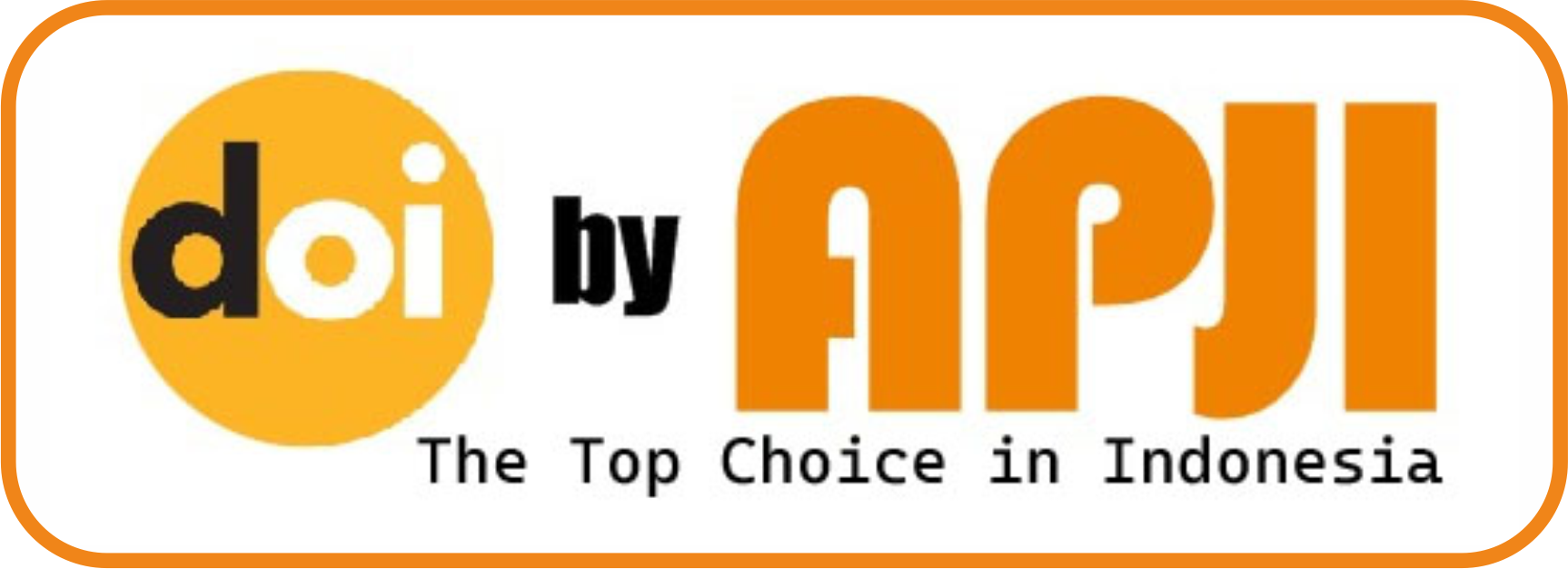Analisis Python Penggunaan Musik Sebagai Pengobatan Gangguan Mental
DOI:
https://doi.org/10.55606/jupti.v2i2.1721Kata Kunci:
Music, Mental illness, Python, StatisticsAbstrak
Music has become an important part of mental healing efforta. This is because music can reduce anxiety, such as symptoms of depression, anxiety, fear and have a positive effect on mood. However, research that describes statistically and explains visually is still rarely done. Therefore, this study aims to describe statistically and visualize the effectiveness of music as a healing of mental disorders. Through the literature study method, namely the search for references related to mental diseases and music, and pyton analysis, namely to conduct statistical data analysis and visualize data. The results explained that sufferers of mental disorders who listen to music are anxiety, depression, insomnia, OCD, the average age of listening to music that is affected by mental disorders of 14 years to 20 years as many as 300 people, on average per day listening to music for three hours a day as many as 175 as many as 175 People, the effectiveness of healing listening to music as many as 548 people from 736 people or in a percentage of 74.5% of the success rate of music in curing mental illness. This study proves that mental disorders can be cured by listening to music, especially music with rock and pop genres. This research contributes to the knowledge of listening to music into an alternative to healing mental disorders.Therefore future research is necessary to study in other mental disease disorders, not limited to patients with anxiety, Isomania, depression, OCD.
Referensi
Christian Nababan, M. W. (2023). Cita-cita Indonesia 2045 Terhalang Masalah Kesehatan Mental Remaja. Kompas.Com.
Fadli, R. (2023). Kesehatan Mental. 2022.
Fernando, D. (2018). Visualisasi Data Menggunakan Google Data Studio. Jurnal Pengabdian Masyarakat, 2(1), 71–77.
Gurbuz-Dogan, R. N., Ali, A., Candy, B., & King, M. (2021). The effectiveness of Sufi music for mental health outcomes. A systematic review and meta-analysis of 21 randomised trials. Complementary Therapies in Medicine, 57, 102664. https://doi.org/10.1016/j.ctim.2021.102664
Handayani, V. V. (2020). Ini Manfaat Terapi Musik untuk Kesehatan Mental. Halodoc. https://www.halodoc.com/artikel/ini-manfaat-terapi-musik-untuk-kesehatan-mental
Irmayani, W. (2021). Visualisasi Data Pada Data Mining Menggunakan Metode Klasifikasi. Jurnal Khatulistiwa Informatika, IX(I), 68–72.
Kim, H. S., & Kang, J. S. (2021). Effect of a group music intervention on cognitive function and mental health outcomes among nursing home residents: A randomized controlled pilot study. Geriatric Nursing, 42(3), 650–656. https://doi.org/10.1016/j.gerinurse.2021.03.012
Koops, L. H., & Kuebel, C. R. (2021). Self-reported mental health and mental illness among university music students in the United States. Research Studies in Music Education, 43(2), 129–143. https://doi.org/10.1177/1321103X19863265
Lafuente, D., Cohen, B., Fiorini, G., García, A. A., Bringas, M., Morzan, E., & Onna, D. (2021). A Gentle Introduction to Machine Learning for Chemists: An Undergraduate Workshop Using Python Notebooks for Visualization, Data Processing, Analysis, and Modeling. Journal of Chemical Education, 98(9), 2892–2898. https://doi.org/10.1021/acs.jchemed.1c00142
Masnidar Nasution, L. (2017). STATISTIK DESKRIPTIF. Jurnal Hikmah, 14(januari-juni), 49–55.
McFerran, K. S., Hense, C., Koike, A., & Rickwood, D. (2018). Intentional music use to reduce psychological distress in adolescents accessing primary mental health care. Clinical Child Psychology and Psychiatry, 23(4), 567–581. https://doi.org/10.1177/1359104518767231
Mubasyiroh, R., Suryaputri, I. Y., & Tjandrarini, D. H. (2017). Determinan Gejala Mental Emosional Pelajar SMP-SMA di Indonesia Tahun 2015. Buletin Penelitian Kesehatan, 45(2), 103–112. https://doi.org/10.22435/bpk.v45i2.5820.103-112
Rahmawati, Yoga, B. W., & Wika, H. L. (2019). Studi Deskriptif Orang Dengan Obsesive Compulsive Disorder. Prosiding Seminar Nasional Pendidikan FKIP, 2(1), 694–706.
Savitrie, E. (2022). Mengenal Pentingnya Kesehatan Mental pada Remaja. Kemkesgo.Id.
Sholikhah, A. (2016). admin,+Journal+manager,+komunika+2+2016_10. Komunikasi Islam, 10(No. 2 (2016)), 1–21.
Sukmawati, E., & Setiawan, A. H. (2021). REFLEKSI PERSONAL ANXIETY DISORDER MELALUI FOTOGRAFI KONSEPTUAL. Sanggita Rupa, 1(1), 6–29.
Suratna, S., & Widarma, A. (2022). Sistem Pakar Diagnosa Penyakit Insomnia Menggunakan Metode Fuzzy Berbasis Web. Hello World Jurnal Ilmu Komputer, 1(1), 53–64. https://doi.org/10.56211/helloworld.v1i1.12
Thangarajah, V. (2019). International Journal of Advance Engineering and Research PYTHON CURRENT TREND APPLICATIONS- AN OVERVIEW. ResearchGate, October 2019, 6–12.
Tysara, L. (2021). 15 Pengertian Musik, Unsur, Jenis-Jenis, dan Fungsinya. Liputan 6.Com.
Wisnawa, K. (2020). Seni Musik Tradisi Nusantara (Edisi Pert). Nilacakra.
Yanti, D. A., Karokaro, T. M., Sitepu, K., . P., & Br Purba, W. N. (2020). Efektivitas Terapi Musik Klasik Terhadap Penurunan Tingkat Halusinasi Pada Pasien Halusinasi Pendengaran Di Rumah Sakit Jiwa Prof. Dr.M. Ildrem Medan Tahun 2020. Jurnal Keperawatan Dan Fisioterapi (Jkf), 3(1), 125–131. https://doi.org/10.35451/jkf.v3i1.527
Yuniartika, W., Santi, C. N., & Azizah S, N. (2019). Penurunan Kecemasan pada Pasien Skizofrenia di Rumah Sakit Jiwa Menggunakan Terapi Musik. Jurnal Penelitian Dan Pengabdian Kepada Masyarakat UNSIQ, 6(1), 26–30. https://doi.org/10.32699/ppkm.v6i1.496



















